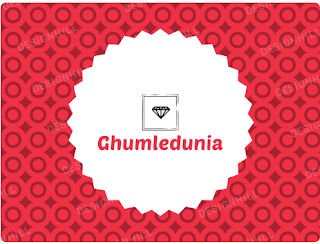There is a reason why people always think that the 3 different board games Ludo, Parcheesi and Pachisi are same.
Key Similarity
Parcheesi and Ludo are 2 games played on a board which looks very similar because they were inspired from the game Pachisi (an Indian ancient game). All of these games have the same goal.
There are 4 players with different color of token - Red, Yellow, Blue and Green. Every player has 4 token and their main goal is to take all of their token to respective home (finish line) before other players.
The truth is the games are quite a lot different in nature. Ludo, Pachisi, and Parcheesi are all board games that share some similarities. Here are some of the similarities between these games:
1. Origins
Ludo, Pachisi, and Parcheesi all have their origins in ancient India. Pachisi is the oldest of the three games, with a history dating back over 1500 years.
2. Game mechanics
All three games are race games where players move their pieces around a board according to the roll of dice or other randomizers. The goal of the game is to be the first player to move all of their pieces to the finish line or to accumulate the highest score.
3. Board design
The boards used in Ludo, Pachisi, and Parcheesi are all similar in design, with a cross-shaped layout and a series of colored squares or circles arranged in a specific pattern.
4. Piece movement
The movement of the game pieces in all three games is determined by the roll of dice or other randomizers. Players must strategize and make tactical decisions to move their pieces around the board and block their opponents' movements.
5. Multiplayer
Ludo, Pachisi, and Parcheesi are all multiplayer games that can be played by two to four players. The games are often played in a social setting, with players competing against each other for bragging rights or small stakes.
Overall, while there are some differences between Ludo, Pachisi, and Parcheesi, these games share many similarities in terms of their origins, game mechanics, board design, piece movement, and multiplayer format.
Differences Between These Games
While Ludo, Pachisi, and Parcheesi share many similarities, there are also some differences between these games. Here are some of the differences:
1. Rules
While the basic rules of the games are similar, there are some differences in the specific rules of each game. For example, in Pachisi, players have the option to capture their opponents' pieces, while in Ludo and Parcheesi, capturing is not allowed.
2. Board design
While the basic layout of the boards is similar, there are some differences in the design and colors of the squares or circles. For example, Parcheesi boards often have a different color scheme than Ludo and Pachisi boards.
3. Number of players
While all three games can be played by two to four players, the optimal number of players may vary depending on the game. For example, Pachisi is designed to be played with four players, while Ludo and Parcheesi can be played with two to four players.
4. Strategy
While all three games require strategic thinking and tactical decision-making, the optimal strategy may vary depending on the game. For example, in Pachisi, players may need to sacrifice some of their pieces to capture their opponents' pieces, while in Ludo and Parcheesi, players may focus more on blocking their opponents' moves.
5. Popularity
While all three games are popular in different parts of the world, their popularity varies. For example, Ludo is more popular in Europe and North America, while Pachisi is more popular in India and other parts of Asia.
Overall, while Ludo, Pachisi, and Parcheesi share many similarities, there are also some differences in their rules, board design, number of players, strategy, and popularity.
Which Game is The Most Challenging?
It is difficult to say which game is the most challenging as it depends on various factors such as personal preferences, skill levels, and game variations. However, Pachisi is often considered the most strategic and challenging of these games due to its complexity and the many different strategies that can be employed.Pachisi involves capturing opponents' pieces and maneuvering one's own pieces to safety, which requires careful planning and strategic thinking. Additionally, Pachisi is designed for four players, which adds an extra layer of complexity and competition.
However, it is worth noting that all three games can be challenging in their own ways and can provide hours of entertainment and fun for players of all skill levels.
Pachisi gained popularity as a cross and circle cloth board game in the 17th century. It is still played around the world. The game was usually played among maximum of 4 players and minimum of 2 players with small tokens. They were required to move their tokens around the board from the starting point to the end.
The person who is able to move all
the tokens before other players to the finishing line becomes the winner of
that game.
In this game, you have to throw 6 or 7 cowrie
shells and based on the shell number that face up and shell number that face
down, you have to move your token particular number of spaces. The word Pachisi
means 25. In this game, 25 is the highest number you can roll.
Pachisi was initially played not just among kids but also among the bettors of that time. As this game gained huge popularity was being played all across Asia (India, Pakistan, China, Spain, Korea, France, Morocco, Colombia and Germany), people developed different versions of this game.
Most of these countries changed the name as well as certain rules of the
game. However, the similarity and nature of these games are clearly visible.
With time, people started playing different and
better versions of this game. Thus, Pachisi’s popularity declined. Two games
which is still popularly played online as well as offline are Ludo and
Parcheesi.
Ludo in Latin means ‘I win 😎.’ It was created in
London in 1896 and was completely inspired by Pachisi.
Parcheesi was developed in America in 1870 by
Parker Brothers and Winning Moves.
Ludo and Parcheesi are a bit different in look
from Pachisi because of the following changes which was required:
l Instead of using traditional cowrie
shells, players have to use a dice and a dice cup.
l You have to play this game on a
cardboard based board rather than a cloth.
What Are The Changes in Ludo and Parcheesi?
The board in Ludo is designed in a way which can
guide you from the starting point to the end. There arrows which will guide you
to move your tokens in right direction. (It is important to note when you are
playing Ludo offline, your tokens won’t move automatically 😂).
Parcheesi game has a simple board which include
similar design of the original version.
In Ludo, players can only use one dice and must
get 6 to start the token’s journey to its home.
In Parcheesi, you have to use 2 dice and must get 5 to start the journey. You can also add the outcome of the two dices to start your game. For instance, you can also start your token’s journey by getting 2+3 or 4+1. Thus, you can move your tokens more quickly and there are more chances of getting your desired number.
In Ludo, you get additional chance to roll your
dice when you kill another player’s token or move one token inside the home.
In Parcheesi, you get 20 additional moves for killing another player’s token and 10 additional moves for moving one of your token inside the home. However, you can only use these moves when your another token is outside and can move the required number of times.
You can’t move your
token if another players have blocked your token’s way or the token is too
close to home to move that number of times.
Regardless of these small changes, the two game
are similar.








.jpg)






0 Comments